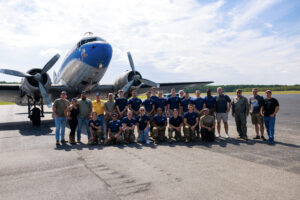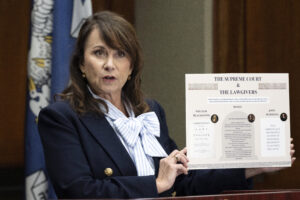
[SLIDESHOW=38905]SOUTH ASIA (BP) — It was just a pile of rubble. The clumps of rocks, bricks and splintered wood melded together with mud dotted the mountainous landscape, each topped with twisted and crumpled tin.
The two 20-something Americans couldn’t believe their eyes. It had been nearly one month since an unusually late monsoon season triggered the worst floods and landslides in 50 years across the South Asia region and no one had reached this village yet to help.
Wolfgang Sebastian* and Mason Buell,* both Christian workers in South Asia, hiked beyond the flooded valleys and up into the mountains where landslides wreaked havoc to assess damage for relief projects. Help couldn’t reach many villages like this one because roads were taken out, right along with their homes. The duo found most residents of the rural village digging in the mud trying to find remnants of their lives.
“This is 20-plus days after the initial collapse of their homes and they’re still digging and looking for useful utensils and food,” Sebastian said about their assessment trip. “That really stuck out to me — 20-plus days after and help is still needed on such a basic level! We were among the first to bring in supplies and that was only what we could carry. It wasn’t enough.”
Flooding and landslides, along with the devastating aftermath, are not new to this region of the world. It happens nearly every year but this year’s late monsoon season is being called one of the worst in 50 years, possibly even a century. An estimated 20 million people throughout Bangladesh, Nepal, India and Pakistan have been affected. Tens of thousands of villages have been wiped out. Hundreds of thousands have been displaced. Millions will have to refurbish or totally rebuild. And in this Himalaya region, winter is right around the corner.
Baptists are responding to this natural disaster through Global Hunger Relief and Baptist Global Response’s field partners. Initial funds helped Sebastian and Buell to hike in food. But as the two workers noted, there’s a lot to be done across the four countries. Francis Horton, BGR South Asia area director, explained that there are 10 ongoing projects to help with the aftermath of this year’s flood season.
“We are responding to ongoing needs from Pakistan, Bangladesh, India and Nepal,” Horton said. “Srinagar (India) is probably the single worst area but there will end up being more displaced people in Pakistan as the flood is still moving south with the swollen rivers.”
The flooding began in late August with torrential rain in Nepal. Workers there say most people could not plant rice in their fields, lost livestock and homes were damaged. The rains continued that month, resulting in heavy flooding in Bangladesh. This forced thousands to flee their homes. The fate of their livestock and fields were the same as Nepal. Then, September came with more rain and the rivers in India and Pakistan flooded their banks and spilled out into the towns. The heavy rainfall caused numerous mudslides.
The 10 relief projects will impact about 18,000 people in 6,700 villages throughout this affected region and will need about $170,000 in funding to complete out the plans. It’s just a drop in the bucket when compared to the massive numbers governments say are in need. But Sebastian and Buell point out, they are trying to find the “forgotten” communities to help … those that have not been reached because they are off the main road. The projects will also focus on niche items that may not be provided through general relief such as, clean drinking water, tin roofs and proper sanitation.
“We’re trying to get into places that no one has really gotten into or has passed over,” Buell said, after describing scenes of dejected people who were so drained from a month of trying to survive that they just sat on the side of the road — too tired to voice their needs.
Relief packets were distributed to displaced in Nepal who lived on the side of an elevated street after their homes were destroyed. Masses of people in India and Pakistan received hygiene kits to help prevent rampant diseases spread during natural disasters. In some areas, they moved on to the rehabilitation stage and funds help to buy tin sheets and tents to serve as roofs for new homes.
There are still those that need the basics, though. A group of men hiked all day down a mountain trail to get to Buell and Sebastian. They loaded the men up with as much rice, beans and tarps as they could carry back up the mountain.
“I feel really inadequate in explaining why I’m there,” Buell said. “I want them to know the Name that has brought this help to them. There is so much need that all we can do is pray.”
To learn how you can help with the needs from the South Asia floods 2014, visit www.gobgr.org.
*Name changed















